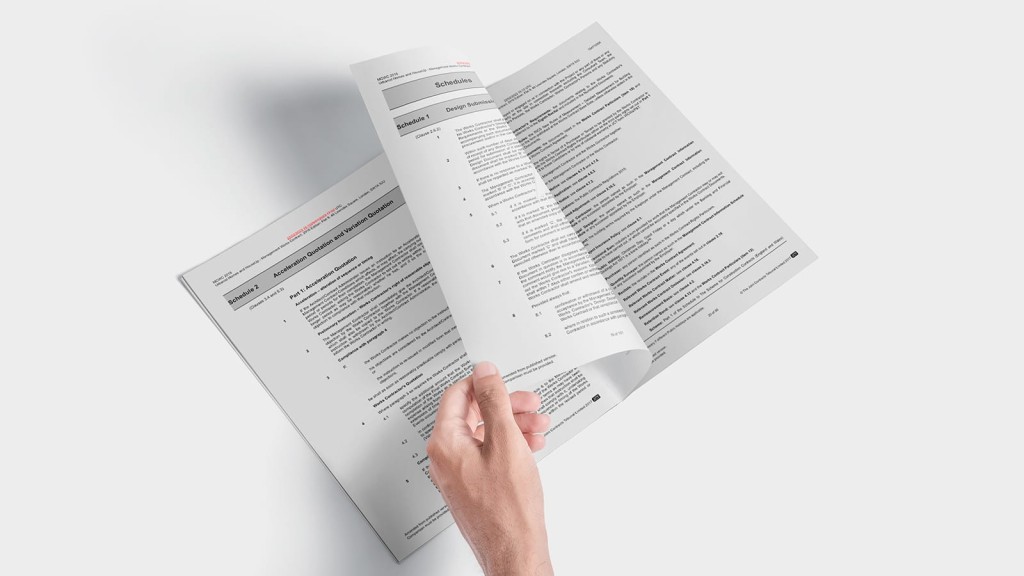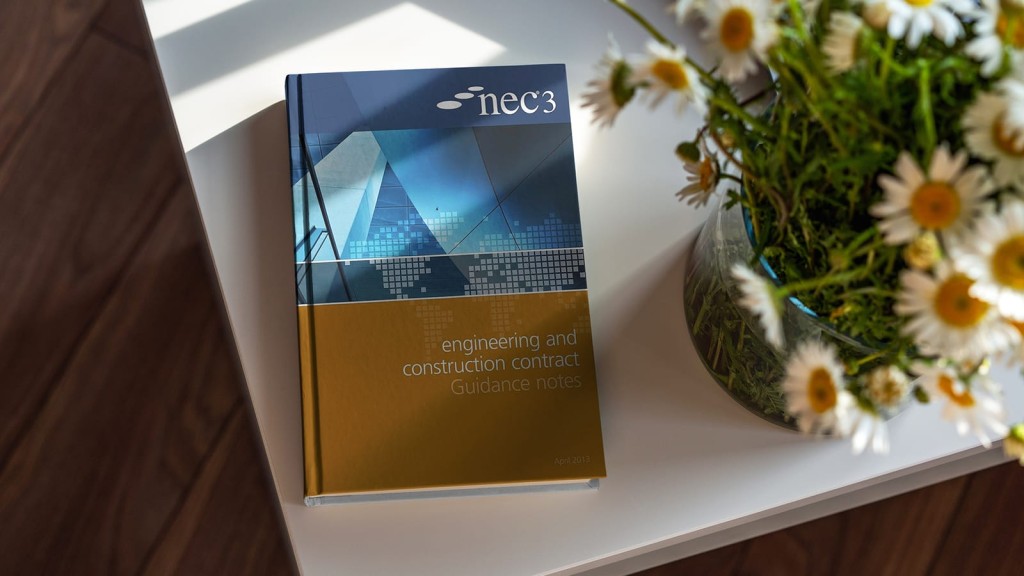Read next
The latest news, updates and expert views for ambitious, high-achieving and purpose-driven homeowners and property entrepreneurs.


Construction contracts. They’re the vital tool used to outline the responsibilities and obligations of all parties involved in the construction process, providing absolute clarity as to what work will be completed, when it will be completed and by who, and importantly, for what price.
Unsurprisingly, without this valuable document, the foundations of your project have the potential to crumble and things can go awry, fast. Though they might sound intimidating, contracts are designed to protect everyone - you and your contractor - and to achieve the best possible results for all parties.
So that’s construction contracts in a nutshell, but you’re here to learn more about a specific set of contracts - JCT contracts. What are JCT contracts? Do you need one for your project and if so, which type of JCT contract is right for you?
In today’s article, we’ll be drilling so deep into this topic that by the time you’ve finished reading, you’ll be so well-versed in JCT contracts you could write a 2000 word article on them.
Alright, enough preamble, let’s jump in and learn all there is to know about JCT contracts and importantly, how to figure out which one is right for your project.
Have you ever wondered how a single document can streamline complex construction processes and safeguard your interests?
Well, that’s exactly what a JCT contract can do. But what is a JCT contract?
Put simply, JCT contracts are a standardised form of contract supplied by the JCT - the Joint Contracts Tribunal - which meet established benchmark provisions and help facilitate construction projects across the UK.
Usually a JCT contract is made between an ‘employer’ (the client) and the ‘contractor’ (the construction team) to make the process as seamless as possible. It’s a document containing the obligations of everyone involved, the agreed costs and timelines, terms and conditions, and the specifications of the project. It’s a clear, go-to document that clearly articulates crucial project details and can be drawn upon if ever there’s a dispute or confusion about what was agreed to as the project progresses.
There are several types of JCT contracts, each purposed for different types of construction projects and later on, we’ll unpack the main three you need to know. JCT describes their contracts as being made up of “families of standard forms, guidance and other documents that are suitable for the majority of construction projects and procurement methods.” For example, there’s a suite of seven contracts under the ‘Minor Works’ family, eight under the ‘Design and Build’ family and so on.
The idea behind creating standardised contracts was born almost 100 years ago in the 1930s, when the JCT was formed by the Royal Institute of British Architects (RIBA). Today, JCT contracts continue to enable smooth project delivery, minimise disputes and reduce the transaction costs of entering into a contract.
While it has its critics, the introduction of the JCT and their suite of contracts has had a largely positive impact on the construction industry, encouraging a standardised and fair approach that protects all parties involved.

JCT contracts provide numerous benefits to their users, but the key advantages can be distilled simply into the following points:
Each JCT contract type is meticulously written to cater to specific project needs, from minor works to major commercial developments. There are several types of JCT contract, but instead of listing them all (that would take a while and wouldn’t be overly helpful) we’ve instead outlined the contract ‘families’, which then have numerous other contracts and subcontracts under that banner.
The families of contract are titled as follows:
The main types of contract used in the UK are the Standard Building Contract, the Design and Build Contract and the Minor Works Building Contract, but the contract you need will of course be completely dependent on the nature of your project.
To help you distinguish these three key types from one another, we’ve broken them down in a little more detail:

The JCT Standard Building Contract is intended for more substantial projects. For example, larger, more complex construction projects that require a higher level of contractual detail.
According to the JCT, features of projects using a Standard Building Contract include the following:

The JCT Design and Build Contract - as the name suggests - is intended for projects where the contractor is delivering both the design and construction work. It’s usually selected for projects where detailed provisions are required.
According to the JCT, features of projects using a Design and Build Contract include the following:

Minor Works Building Contracts are suitable for smaller, simpler construction projects that aren’t overly extensive or complex.
According to the JCT, features of projects using a Minor Works Building Contract include the following:
With so many options, you might be wondering which JCT contract is right for your project. Contrary to popular belief, choosing between different JCT contracts is more art than science, requiring insight beyond mere specifications.
When trying to establish which JCT contract is right for your project, it’s important to consider the following factors:
What type of project are you going to be working on? Is it an extension? A new build? A repair and maintenance job? Predictably, the nature of your project will greatly influence which style of contract is appropriate for your build.
The other thing to consider here is the scope of the works, AKA the project’s complexity. Reflect on the size, the location and the difficulty of your project. Could there be any issues in relation to access, storage and movement? Is the design straight forward, or will it require sophisticated construction methods? In addition to the scope of the works, are there any site restrictions you need to account for related to noise or access? All of these elements need to be taken into account before selecting your JCT contract.
The first question here is who is responsible for the design. Is it solely you and your design consultants? Is it completely in the hands of the contractor? Or is it something of a fusion, where your team is doing most of the design, but the contractor is doing some of it?
Secondly, if there are specialist contractors involved, will it be you as the employer selecting them, or the contractor? Will the contractor have control over the materials and workmanship employed, or will you and your design consultants look after that?
Establishing how the project will be rolled out and who is responsible for what is key in working out which JCT contract is right for you.
One of the most important parts in this process is identifying who is going to take charge and ensure your project is completed correctly and on programme. Will you appoint a project manager? Will it be you or someone else representing you? Further, will smaller matters be looked after by individual consultants? Contractors? Sub-contractors? Establishing who will be responsible for steering the ship will help dictate which JCT to move ahead with.
Along this line, you also need to think about whether there are likely to be any design changes throughout the construction phase. If there are, you need to choose a contract that is more flexible with variations/valuing of unexpected changes to the works.
How will you go about appointing your contractor? Will it be by competitive tendering, or by negotiation? Will the contractor be involved in the construction, or will they be a part of the design process too? Establishing what you’d like the contractor's role to look like is a critical part of figuring out which contract is right for you.
The other thing to think about is the cost and terms of payment. Would you prefer a lump-sum contract? Would this sum be fixed or is it flexible? This will help narrow down your decision.
The last point that will help inform which JCT contract is right for you is to consider your relationship with risk. Are you seeking a contract that has the lowest amount of risk? What are the risks you foresee? How do you wish to handle risk in relation to decisions regarding cost, time and quality?
Many overlook the importance of carefully selecting a JCT contract, yet this decision can dictate the entire course of a construction project. While this is a brief overview that covers the basics, JCT goes into greater depth on how to choose the right JCT contract on their site. If you ever need additional assistance however, don’t hesitate to get in touch with our expert team.

A common question in the world of construction contracts is what the difference is between a JCT contract and an NEC contract, and if you’re reading this article, chances are you’ve been wondering the same thing.
Like JCT contracts, NEC contracts are a standardised form of contract available in the UK, but unlike JCT contracts, they can be used internationally, adopting governing law and language that can be used in contexts outside of the UK.
JCT contracts are more commonly used and well known than NEC contracts, which is largely tied to the fact that they’ve been around for so long. While JCT contracts date back to the 1930s, NEC contracts only came about in the early 1990s.
Generally speaking, NEC contracts are used for engineering projects (though can be adapted to building projects), while JCT contracts are more regularly used for building projects (but again, they can be adapted for engineering projects).
While JCT contracts have a keen focus on risk allocation and generally adopt a more adversarial approach, NEC contracts are more focused on agile collaboration between the employer and contractor when it comes to resolving cost, quality or time issues. NEC contracts were created in response to some of the JCT contract’s limitations and are thought to be more ‘progressive’. An example of this progressive style is an excerpt from the NEC4 Engineering and Construction Contract, which implores the project manager and supervisor to “act in the spirit of mutual trust and cooperation.”
Overall, JCT is the option preferred by those who seek greater control over the delivery of their project, with an even split of risk shared between the employer and the contractor. Conversely, NEC is more often used for work in the public sector, including for transport, education and healthcare infrastructure.
The whole suite of JCT contracts can be accessed on their website, and you’re able to choose either a hardcopy or a digital version, the latter being the more expensive option.
In terms of how much a JCT contract costs, it varies depending on which contract type you choose, but hard copies generally are available for between 50 - 100 pounds, while digital versions are between 100 - 200 pounds.
A current price list is available on the JCT website which goes into much more detail regarding the prices of each contract type.

Not having a JCT contract or another form of contract in place before going ahead with a construction project means you - as the party procuring the works - will be in a less-protected, more vulnerable position.
Though it might be tempting to just ‘go with the flow’, especially if you’re working with a contractor you get along with and trust, by not having a contract in place you are effectively exposing yourself to the terms and conditions of your contractor (who will naturally have their best interests prioritised ahead of yours), which means there’s no guarantee of how disputes will be resolved, potentially resulting in unfinished works and costly legal disputes.
Ultimately, it serves all parties to have clear outlines agreed to before works commence to make sure everyone is on the same page and that no one gets the short end of the stick.

Feel like you could write your own article about JCT contracts now? We told you you’d be an expert by the end!
Many believe that all construction contracts are more or less the same, but the nuances of JCT contracts can make or break your project's success, which is why we thought it was so important to pen this article.
Our London-based team has worked extensively with JCT contracts and played the role of contract administrator numerous times and we’d love to work with you to help bring your dream design to life.
If you are planning future projects and are seeking further guidance as to which contract is best for your project, please don’t hesitate to get in touch.

Robin Callister BA(Hons), Dip.Arch, MA, ARB, RIBA is our Creative Director and Senior Architect, guiding the architectural team with the insight and expertise gained from over 20 years of experience. Every architectural project at our practice is overseen by Robin, ensuring you’re in the safest of hands.
We look forward to learning how we can help you. Simply fill in the form below and someone on our team will respond to you at the earliest opportunity.
The latest news, updates and expert views for ambitious, high-achieving and purpose-driven homeowners and property entrepreneurs.
The latest news, updates and expert views for ambitious, high-achieving and purpose-driven homeowners and property entrepreneurs.










We specialise in crafting creative design and planning strategies to unlock the hidden potential of developments, secure planning permission and deliver imaginative projects on tricky sites
Write us a message